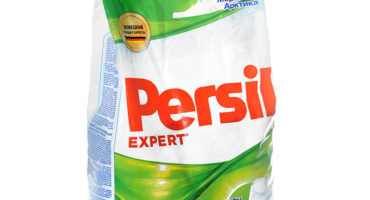The tireless toiler and the main assistant to the hostess is a washing machine. It saves a lot of time and effort, and with careful use it will serve faithfully for many years. However, improper care is guaranteed to lead to the appearance of a specific smell and black coating - mold. If the problem was noticed in a timely manner, then it will be possible to eliminate mold in the washing machine on its own, without resorting to costly repairs, during which damaged parts are replaced. These are, as a rule, filters, hoses, rubber seals. If you do not take proper measures, lose time, deal with the consequences will be quite difficult. It is also worth remembering that black mold is very unhealthy and can cause a number of serious diseases.
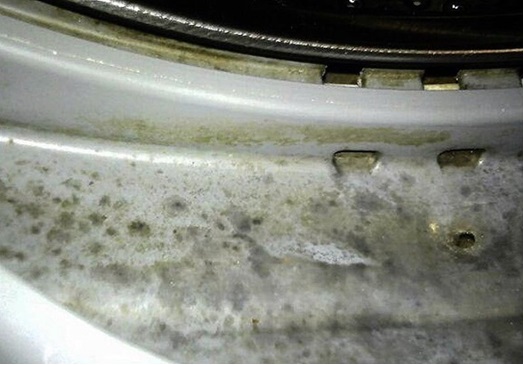
Mold on the rubber seal of the hatch of the washing machine
Causes of Mold
It is useless to deal with the investigation, first you need to find and eliminate the cause, otherwise the problem will be repeated endlessly. Black plaque is a colony of fungi. Moisture and heat are ideal conditions for the appearance and reproduction of this scourge, which can spread throughout the room in a matter of days, hitting walls, pipes, furniture.
Regular ventilation bathroom ventilation, surfaces in which are often covered with condensate, is an excellent method of dealing with high humidity.
Do not save too much and often use the quick wash mode in cool or warm water. Such savings can result in high costs. Black mold survives at temperatures up to 60 degrees, so disinfection with hot water is essential for the internal parts of the device.
Rinse aid should be metered during washing. Excessive use of it causes the formation of white plaque on surfaces in contact with it. Favorite place for the "enemy" colonies.
Do not store dirty laundry in the washing machine chamber! Especially wet, sweaty and oily clothes are an excellent breeding ground and breeding ground for fungal spores.
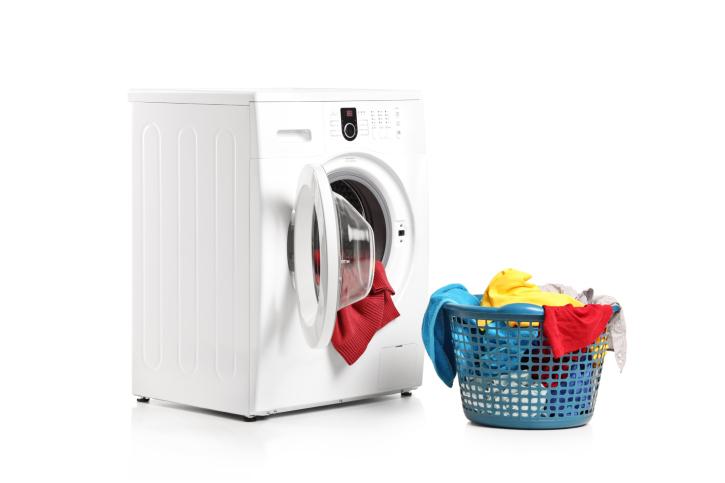
Proper storage of dirty laundry
The most common mistake is the tightly closed unit cover. It is important to provide air access to the chamber of the washing machine for ventilation and drying; otherwise, problems cannot be avoided.
The so-called invisible cause of the appearance of the fungus can become improper connection of the washing machine. If the water will accumulate, not completely leaving the sewer, it will be impossible to remove the mold until the situation is corrected.
Places where mold first appears
The rubber seal on the door and the space under it should be inspected carefully throughout the entire diameter. Next are the filters and all the hoses. As well as a powder tray and the entire surface of the machine from the inside. The gap between the drum and the walls of the machine is difficult to inspect, but there are times when you need to disassemble the machine and carry out preventive disinfection.
It is important to remember that the fungus first settles on plastic and rubber surfaces, and lastly on metal ones.
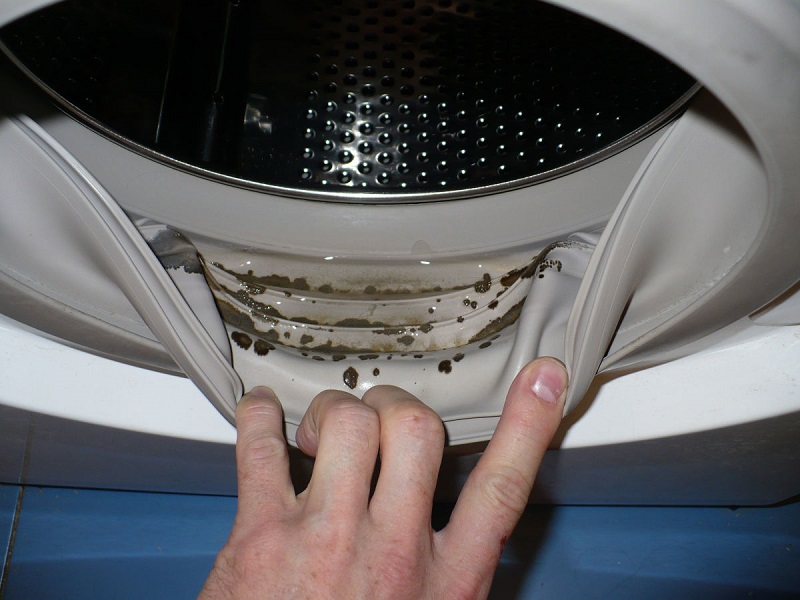
Mold in the folds of a rubber seal
It is necessary to regularly inspect the details of the device, for the timely detection of fungal colonies. The sooner the spores are detected, the easier and faster it will be possible to remove the mold and prevent the spread.
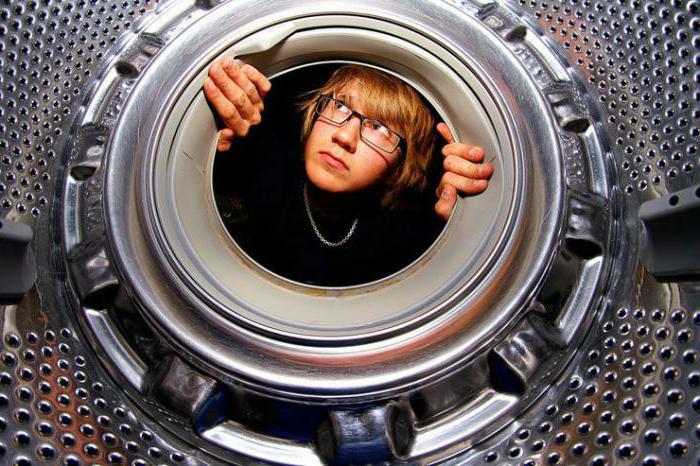
Door rubber seal must be inspected carefully
How to get rid of mold in a washing machine?
Having identified all the places of deployment, you should immediately proceed to the complete destruction of mold.
Manual methods
First, you should conduct mechanical cleaning of the elements of the washing machine from mold. Dishwashing liquid, citric acid, sponge or toothbrush is an arsenal that can cope with visible colonies of fungi. This, the least aggressive way, is as follows: citric acid, dishwashing liquid and a small amount of water are mixed. The gel-like composition must be wiped off the places of deployment of the “enemy” and left for the whole day. Then rinse off with a sponge or brush.
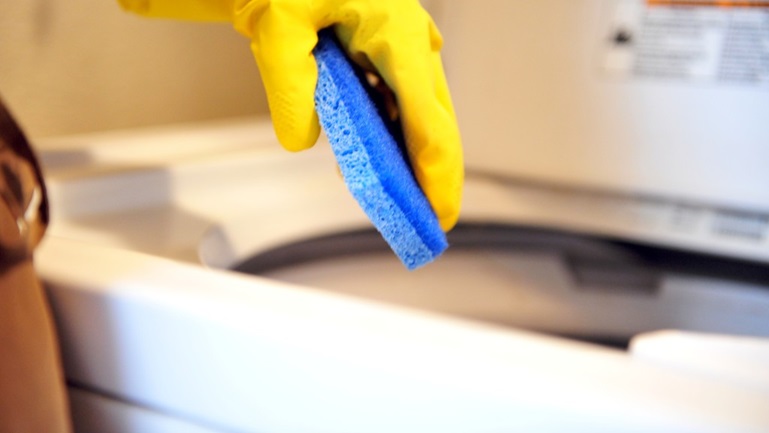
Mold removal with a sponge
Dishwashing gel will successfully replace washing powder. About 50 gr. powder and citric acid mixed with water until a thick slurry, apply to the affected area for 10 hours, then rinse with a sponge or brush.
The second way to remove mold deposits is the use of copper sulfate. For ease of use, you can pour the product into a bottle with a spray and treat the desired surface. To achieve the greatest effect, the product should not be washed off for about a day. Particularly thoroughly wash the rubber seal and wipe it dry.
A fairly quick and effective tool is a steam generator. Hot steam can even eat mold.
"Chemical" methods
But mechanical cleaning is usually not enough. Need to destroy the spores and clean hard-to-reach places in the washing machineand also get rid of the smell of mold. Sequencing:
- Pour into the dispenser any product containing chlorine in its composition and turn on the washing mode with maximum heating of water for a long time.
- At the end, enable the “rinse” option using vinegar or citric acid as a cleanser.
- Repeat the wash cycle with as hot water as possible to remove mold odor.
- Dry or wipe the parts of the washing machine.
The most radical way to combat mold infection of a device is to use industrial fungicides. In hardware stores there is a large arsenal of funds. Be sure to read the instructions before use. As a rule, it should be indicated that the tool is allowed to be used for washing machines. Incorrectly selected “chemistry” can lead to damage to expensive parts of the device. Fungicides are quite aggressive, you need to remember safety measures, work with gloves and protect the respiratory tract from the fumes of the drug. Fungicides are also dangerous for pets. Processing should be carried out according to the instructions and be sure to thoroughly rinse the treated surfaces with plenty of water. Then turn on several cycles of “empty” washes to avoid contact of the remnants of the chemical product with things.
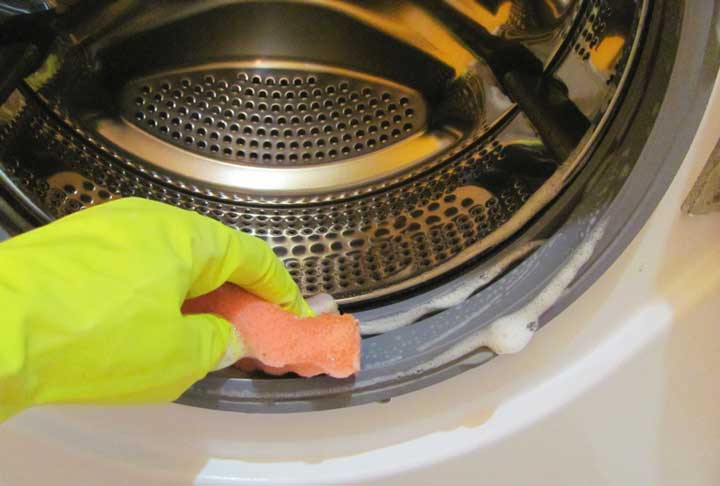
Chemical solution treatment
Chlorine and aggressive chemicals are certainly capable of dealing with misfortune at a time, but can lead to damage to the rubber parts of the machine. They harden, become cracked and fail. To prevent this, do not use radical means too often. If there is still not a lot of black coating and the smell of musty is barely perceptible, it makes sense to disinfect with hydrogen peroxide:
- Pour approximately 200 grams of regular soda into the powder compartment.
- To add hydrogen peroxide there, it is better in tablets - 10 pieces.
- Choose the maximum water temperature and start the “idle wash”
- Enable rinse mode.
- When finished, dry or wipe dry.
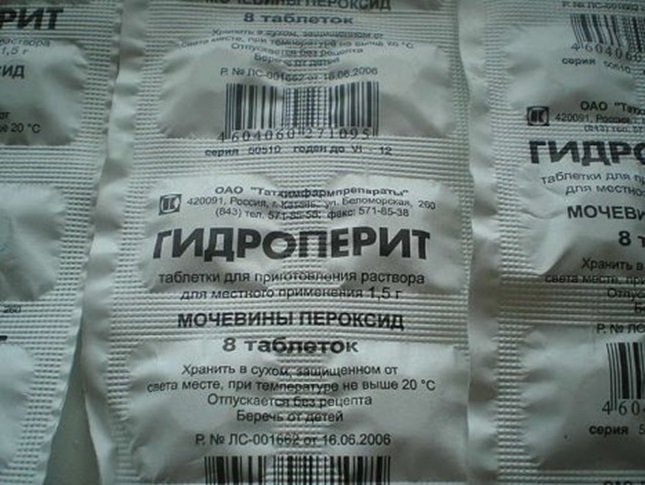
Hydrogen peroxide in tablets
An equally important stage in the fight against fungal infection of the device is cleaning all hoses and filters. You can do it yourself.In the event that the infection has spread to the details of the heating element, the services of a qualified specialist may be required. In particularly difficult cases, alas, a serious disassembly of the washing machine and the complete replacement of some of its parts are necessary.
If, after all the independently applied efforts, a musty smell is still felt in the machine, and especially after washing, the clothes smell unpleasant, you should immediately contact a specialist. After disassembly and inspection, he will give an opinion on the extent of the "disaster", and decide on the need to replace parts.
Prevention of mold formation in the washing machine
To avoid expensive repairs, not to waste time and nerves, not to wonder - how to permanently get rid of hated mold in a washing machine, it is enough to follow a few simple rules.
- It is imperative to prevent dampness in the room where the washing machine is located. To remove moisture, use a hood, leave the bathroom door ajar.
- It is possible to process the room with an ultraviolet lamp. To prevent the appearance of fungal spores, it is enough to turn on the lamp once a week for several minutes.
- After washing, wipe the rubber seal on the manhole cover dry and dry the drum, leaving the door open.
- Rinse and dry powder tray.
- Monitor the complete drainage of water at the end of the wash, timely eliminate the cause of stagnation of water in the drum.
- Do not store dirty, and especially wet, laundry in the chamber and take out clean clothes immediately after washing.
- Be sure to use washing in hot water, if such a regime is permissible for things. Otherwise, at least twice a month turn on the wash with the maximum temperature “idle”, adding detergent with bleach.
- Do not forget to clean hoses and filters. This should be done from time to time, since the garbage accumulating there is a breeding ground for the propagation of black mold.
- Two, three times a year to carry out preventive cleaning of the internal elements of the washing machine using vinegar, citric acid. “Single” washing in hot water with the addition of these products will not allow the fungus to appear and gain a foothold.
- Do not often use rinses, balms and fabric softeners, as well as liquid detergents that have become popular. These funds are difficult to wash and remain in hard-to-reach places in the form of plaque or mucous smudges, where mold begins to form.
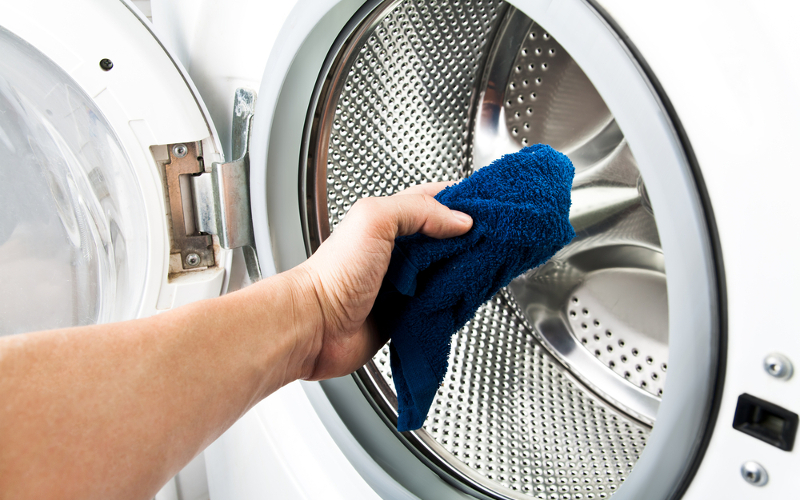
Timely prevention prevents mold in the washing machine
The care rules are not complicated, and effective enough to keep the washing machine clean, ensure its smooth operation, not give a single chance of mold, and enjoy the aroma of freshly washed laundry.


